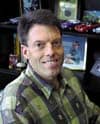Less than one in seven patients who suffer from sleep apnea in the United States have been diagnosed. Patients often are reluctant to sleep away from home at a sleep lab or clinic to be tested. Several studies have documented challenges with the first night effect and with the need to do multiple night testing (due to the variability inherent with OSA).1,2 In an effort to offer patients an alternative to a sleep lab or clinic, LifeWatch Corp, Chicago, recently introduced NiteWatch, a home sleep apnea testing service, which allows patients to be tested in their normal sleeping environment. Sleep Review spoke to Kathleen Keating, NiteWatch clinical manager, about the program and its initial rollout.
Sleep Review: Tell me about the NiteWatch program. What is it and how does it work?
Kathleen Keating: NiteWatch is modeled after our remote heart monitoring programs. We equip a patient with a device and knowledge and monitor them in their everyday environment. The company is enhancing community awareness of the fact that we are doing portable sleep diagnostics in a patient’s home compared to the sleep lab setting. Our program is following the guidelines of Medicare and AASM. Our medical advisers, who are sleep physicians and cardiologists, understand the correlation between disease states and urged us to enter the space. Currently, we are using a Type 3 device that measures oral nasal pressure, respiratory effort, snoring, activity, actigraphy, ECG, pulse, and oxygen saturation. Our enrollments come in electronically from physicians. We ship the devices out to patients and have our technicians call the patient each night of their test. They assist the patient in setting up the sleep study device. The test device is returned to us upon completion, and it is downloaded, scored, and interpreted. The ordering physician then gets a letter of interpretation from a board-certified sleep physician indicating diagnosis and recommendations.
SR: And how is this treatment pathway different than the traditional treatment pathway?
Keating: The traditional treatment pathway is through a full polysomnogram in a lab, and we’re offering the convenience and comfort of performing that approved diagnostic study in the patient’s home at a reduced cost.
SR: Was it the medical advisory board that helped put together the treatment pathway protocol?
Keating: We utilized a combination of expert opinion with evidence-based medicine.
SR: And how is the rollout of the program coming along?
Keating: It has been very successful. There are always challenges in starting up a new service line, but the technology, IT infrastructure, and internal training components have gone smoothly.
SR: Have you hit any snags along the way?
Keating: Not yet. But we just rolled out January 1.
SR: How many patients have used the NiteWatch program to be diagnosed?
Keating: We have tested over 200 patients. We completed beta testing fourth quarter of 2009.
SR: As you know, there are many industry professionals who have argued that home testing reimbursement rates are too low and it is therefore a modality that is not sustainable from a business perspective. What would you say in response to that perspective?
Keating: I think it all depends on the efficiency of your operation. Yes, the reimbursement is low, and yes, the payment process has not caught up with the new trend in OSA diagnostic technologies, but having an infrastructure where hundreds of tests are processed daily helps to provide a profitable platform right from the initial rollout.
SR: And how do you plan to remain profitable with the current reimbursement rates?
Keating: We have a very solid infrastructure with our cardiac diagnostics, which conducts 30 days of heart monitoring at similar rates, and this allows us to replicate a very efficient operation.
SR: How can sleep professionals get involved with NiteWatch and how do they stand to benefit?
Keating: Well, sleep professionals certainly can make this service available to their patients who are reluctant to come into a sleep lab and are therefore going undiagnosed.
SR: So sleep professionals can collaborate with NiteWatch to help diagnose their patients using home sleep testing, is that correct?
Keating: Certainly, we can perform the technical service and will allow sleep professionals to perform their own interpretations.
References
- Le Bon O, Hoffmann G, Tecco J, et al. Mild to moderate sleep respiratory events. One negative night may not be enough. Chest. 2000;118:353-9.
- Mosko SS, Dickel MJ, Ashurst J. Night-to-night variability in sleep apnea and sleep-related periodic leg movements in the elderly. Sleep. 1988;11:340-8.




